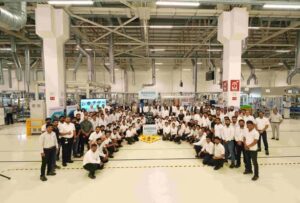Why Volkswagen And Skoda Cars Are Getting More Affordable To Own And Maintain: Explained!

Skoda and Volkswagen continue to be two desirable brands among Indian buyers. Despite their European flair, many Volkswagen (VW) and Skoda models from the past were expensive to own. These vehicles have recently become more affordable to own and maintain. A strong reason for this is the extensive localisation in manufacturing that Volkswagen-Skoda has adopted. Almost everything from the platform to the engine (of the India 2.0 vehicles- Kushaq, Kylaq, Taigun, Slavia and Virtus) is made in India. The company recently announced the production milestone of 500,000 locally manufactured engine units at the Chakan facility..
History and Evolution
Volkswagen Group entered the Indian market in 2001 with the launch of Škoda Auto. Over the years, Volkswagen and Audi followed, setting up independent operations. In 2019, the Volkswagen Group merged its Indian operations under a single entity, Škoda Auto Volkswagen India, to streamline business processes and enhance market presence. This consolidation allowed for better utilization of resources, improved efficiencies, and a focused product strategy.
Manufacturing and Infrastructure

SAVWIPL operates two major manufacturing facilities in India:
- Chakan Plant, Pune – A state-of-the-art facility with a production capacity of 200,000 units per year. It manufactures vehicles for Škoda and Volkswagen, including popular models like the Škoda Slavia, Kushaq, Volkswagen Taigun, and Virtus.
- Aurangabad Plant, Maharashtra – Primarily used for assembling luxury brands like Audi, Porsche, and Lamborghini models sold in India.
The company also has an R&D center and design unit, focusing on localizing products to meet Indian consumer preferences and cost dynamics.
India 2.0 Strategy
One of the key transformations for SAVWIPL came with the India 2.0 strategy, an ambitious initiative aimed at strengthening the group’s position in the Indian market. The strategy involved an investment of ₹8,000 crore ($1 billion) for new product development, localization, and technological advancements.
The MQB-A0-IN platform, a localized version of Volkswagen’s MQB-A0 platform, was developed specifically for India. This platform underpins the latest Škoda and Volkswagen models and ensures greater affordability, efficiency, and adaptability to Indian conditions.
Key Models and Market Performance
Škoda Auto:
- Kushaq – A compact SUV designed specifically for India, competing with Hyundai Creta and Kia Seltos.
- Slavia – A premium sedan targeting Honda City and Hyundai Verna buyers.
Volkswagen:
- Taigun – Compact SUV competing with Kushaq, Creta, and Seltos.
- Virtus – A stylish sedan positioned against Slavia, Verna, and City.
Audi, Porsche, and Lamborghini:
While Škoda and Volkswagen cater to the mass premium segment, Audi, Porsche, and Lamborghini focus on luxury and performance-oriented models. Audi has strengthened its presence with electric vehicles like the e-tron series, while Porsche and Lamborghini continue to serve niche high-performance car enthusiasts.
Localization and Exports
Localization remains a critical pillar for SAVWIPL. The company has increased localization levels up to 95%, significantly reducing production costs and making vehicles more competitive in the Indian market. This initiative extends to sourcing local components, engine manufacturing, and assembly processes.
Additionally, India has become an important export hub for Volkswagen Group. Vehicles manufactured in India are exported to markets in Africa, Latin America, and Southeast Asia. The Chakan plant serves as a production hub for Volkswagen Group’s international expansion.
Challenges and Competitive Landscape
Despite its strong strategy, SAVWIPL faces stiff competition from established players like Maruti Suzuki, Hyundai, Kia, Tata Motors, and Mahindra. Price sensitivity, customer trust, after-sales service, and fuel efficiency are key factors influencing buying decisions in India.
To counter this, SAVWIPL has strengthened its service network, introduced extended warranty programs, and enhanced digital customer experiences. Additionally, it is investing in hybrid and electric vehicle (EV) technology to align with India’s sustainability goals.
Future Outlook and EV Strategy
The future for Škoda Auto Volkswagen India looks promising with a strong focus on electric mobility, hybrid vehicles, and digital transformation. Volkswagen has already introduced the ID.4 EV globally and is expected to bring it to India in the near future. Škoda is also working on affordable EV solutions for emerging markets.
The company plans to leverage India’s FAME-II policy (Faster Adoption and Manufacturing of Hybrid and Electric Vehicles) and invest in charging infrastructure, battery localization, and alternative fuel technologies.


Your article helped me a lot, is there any more related content? Thanks!